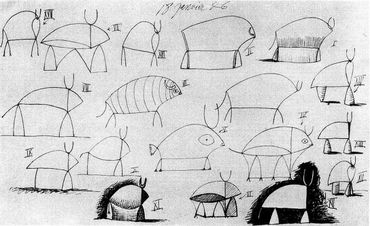Art Movement - Cubism
Analytical Cubism (1907–1912) and Synthetic Cubism (1912 onward)
Cubism is generally divided into two phases: Analytical Cubism (1907–1912) and Synthetic Cubism (1912 onward). Analytical Cubism focused on deconstructing objects into fragmented, monochromatic planes, while Synthetic Cubism introduced brighter colors, simpler shapes, and the use of collage and mixed media.
The Cubism Art Movement
Cubism was a groundbreaking 20th-century art movement that emerged in the early 1900s, primarily pioneered by Pablo Picasso and Georges Braque in Paris. It represented a radical departure from traditional techniques of perspective, modeling, and realistic representation. Instead of depicting objects from a single viewpoint, Cubist artists broke them down into geometric shapes and reassembled them in abstracted forms, showing multiple angles simultaneously. This approach challenged conventional ideas of space and form, and introduced a new visual language that emphasized structure over detail.
Cubism is generally divided into two phases: Analytical Cubism (1907–1912) and Synthetic Cubism (1912 onward). Analytical Cubism focused on deconstructing objects into fragmented, monochromatic planes, while Synthetic Cubism introduced brighter colors, simpler shapes, and the use of collage and mixed media. Cubism influenced not only painting but also sculpture, architecture, and design, laying the foundation for much of modern and abstract art. Besides Picasso and Braque, artists such as Juan Gris, Fernand Léger, and Robert Delaunay also contributed significantly to the development and spread of the movement.
Pablo Picasso
Pablo Picasso (1881–1973)
He was a Spanish artist widely regarded as one of the most influential and innovative figures in modern art. A prolific painter, sculptor, printmaker, and ceramicist, Picasso is best known as the co-founder of Cubism, alongside Georges Braque. Throughout his long career, Picasso constantly reinvented his style, moving through different artistic periods such as the Blue Period (marked by somber, melancholic tones), the Rose Period (warmer, more optimistic themes), and later, the highly experimental Cubist phase. His revolutionary approach to form and perspective broke away from traditional representation, profoundly shaping 20th-century art.
One of Picasso’s most iconic works is Les Demoiselles d’Avignon (1907), considered a pivotal piece in the development of Cubism. Another major work, Guernica (1937), is a powerful anti-war painting that conveys the horrors of the Spanish Civil War through a chaotic, monochromatic composition. Picasso's impact extended beyond painting—he also made major contributions to sculpture, drawing, ceramics, and stage design. His immense output, boundless creativity, and fearless experimentation made him a central figure in modern art, and his legacy continues to influence artists around the world.














This website uses cookies.
We use cookies to analyze website traffic and optimize your website experience. By accepting our use of cookies, your data will be aggregated with all other user data.


